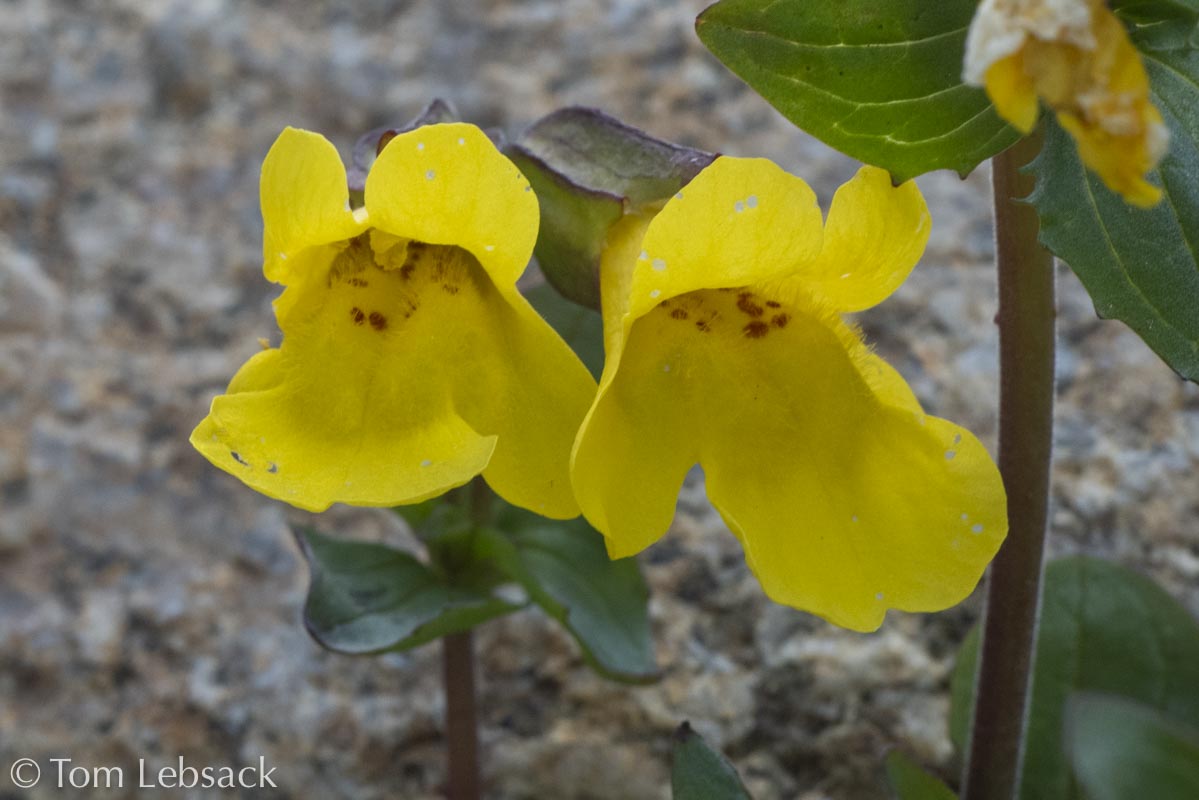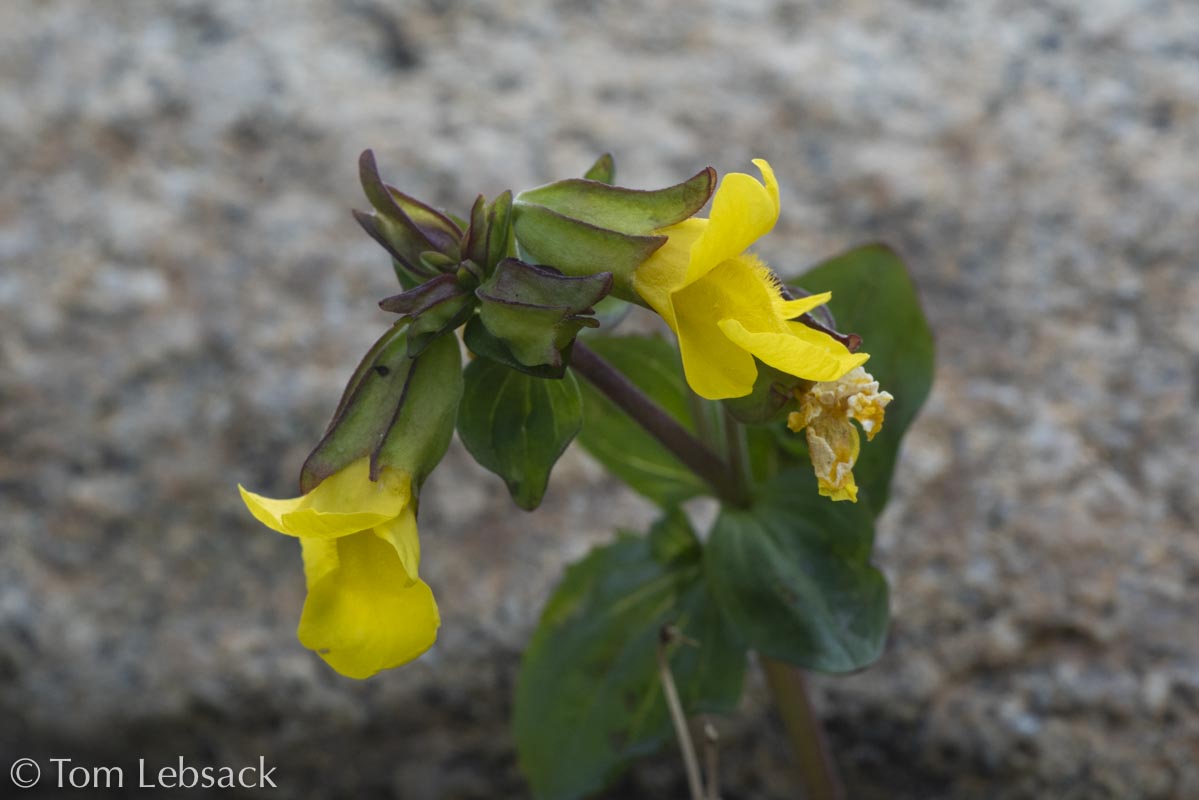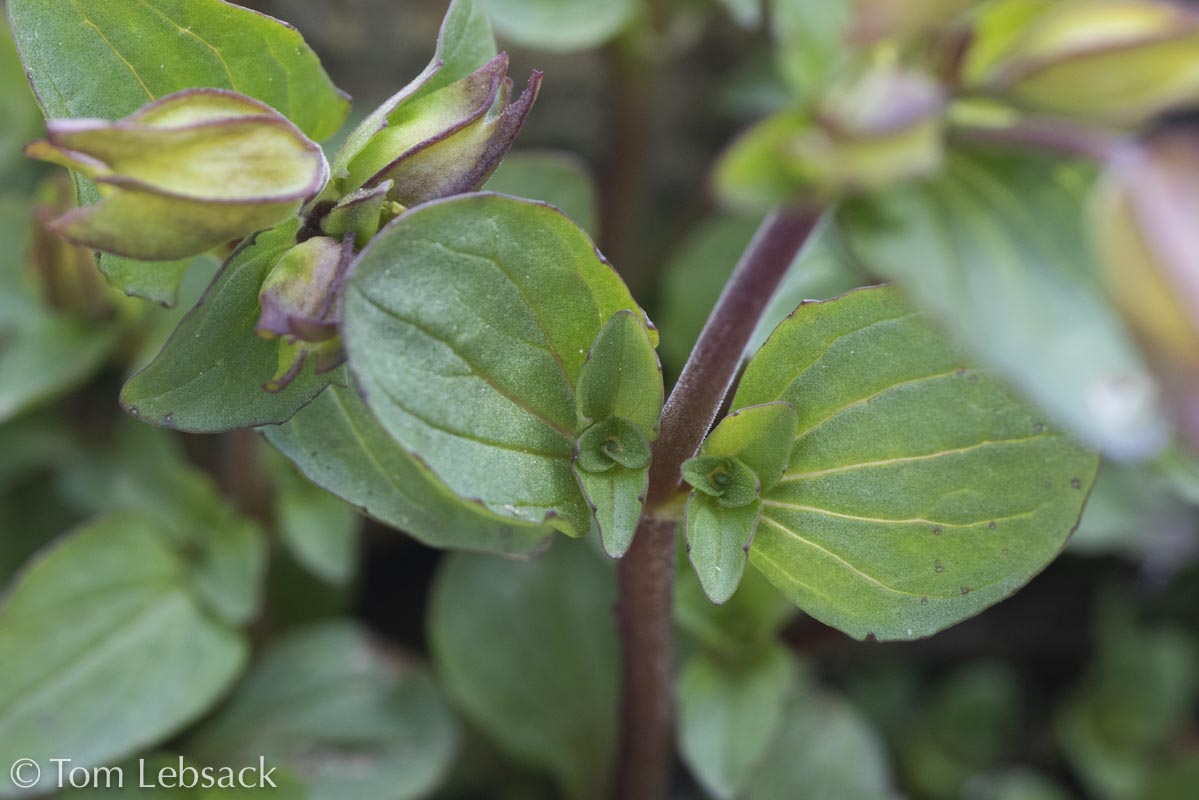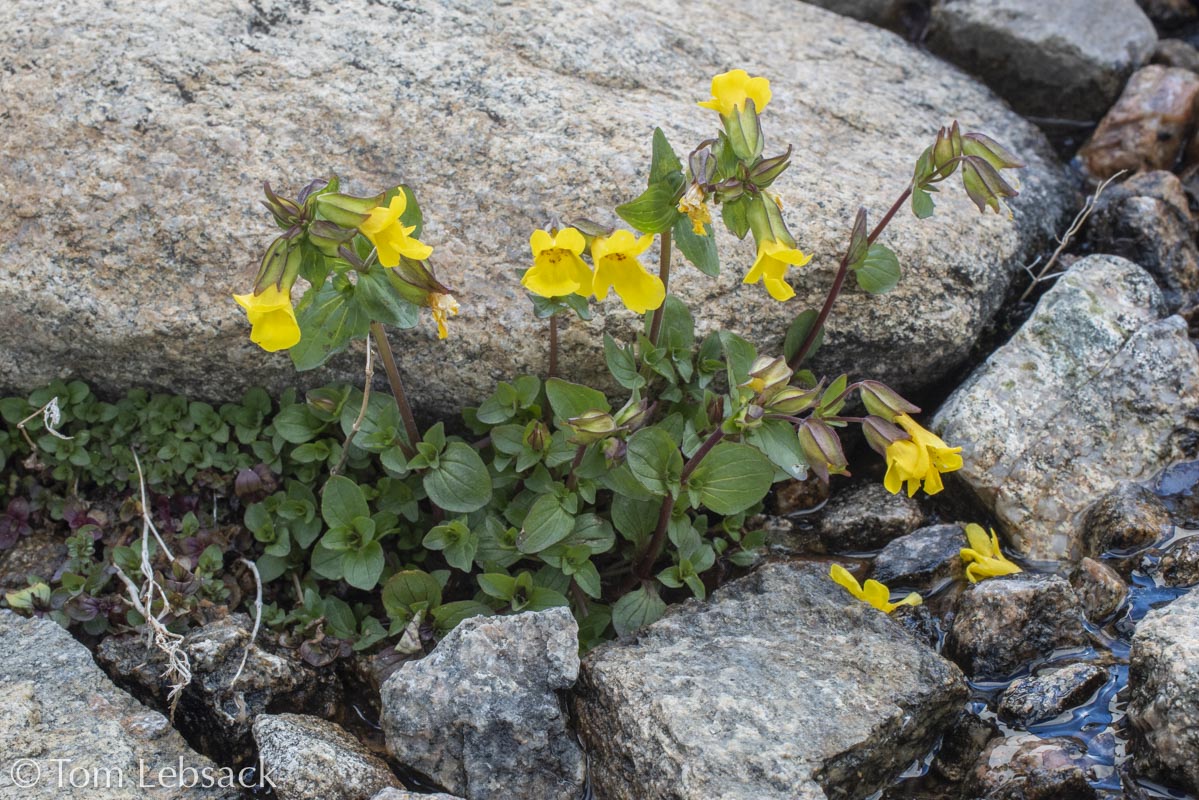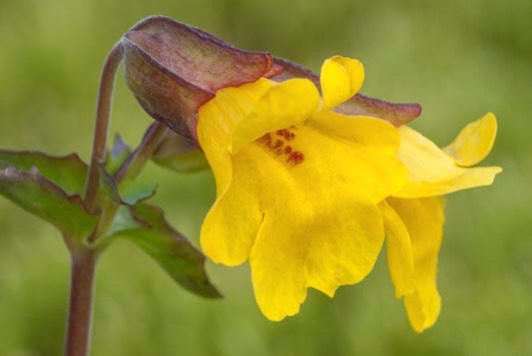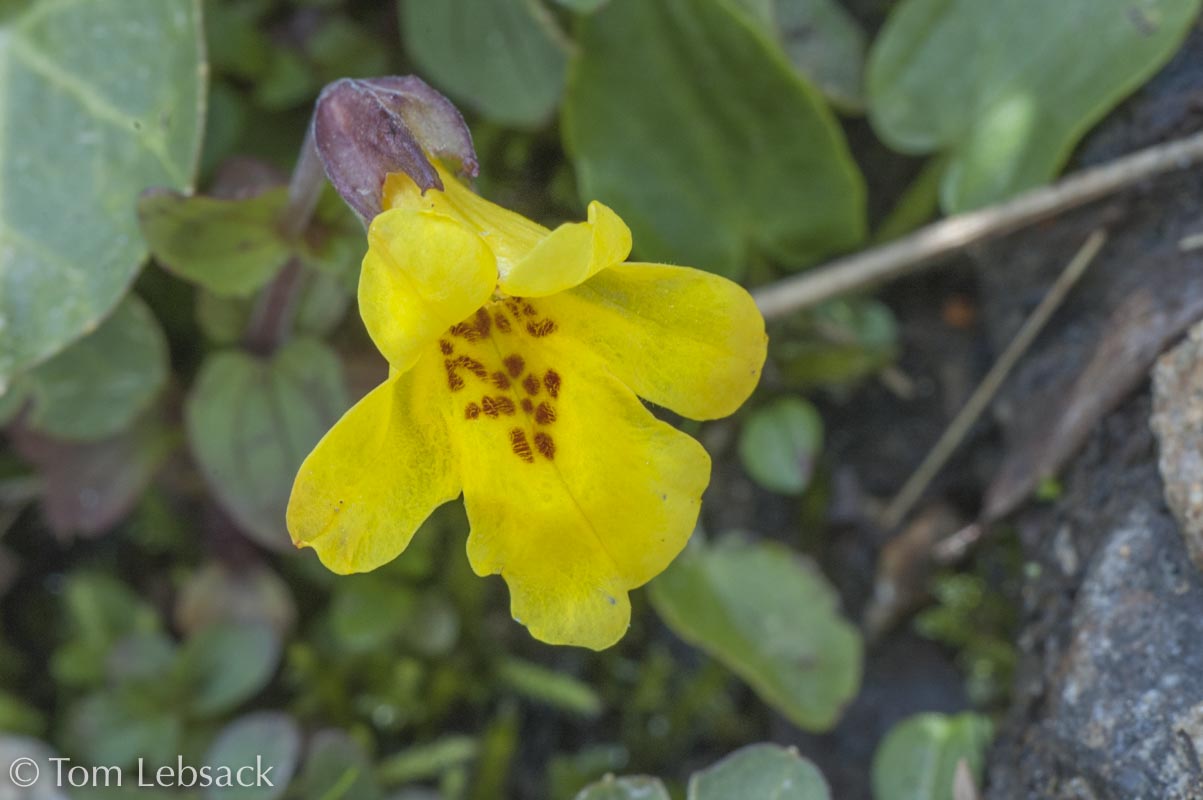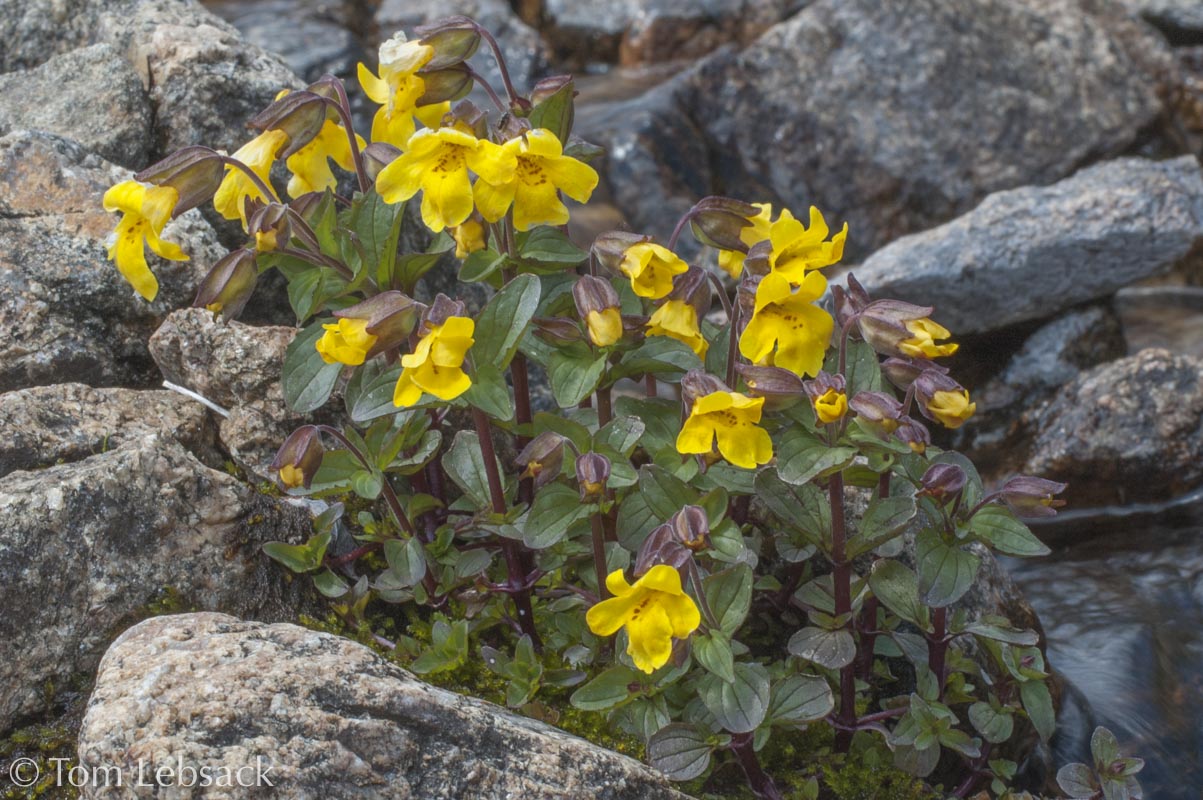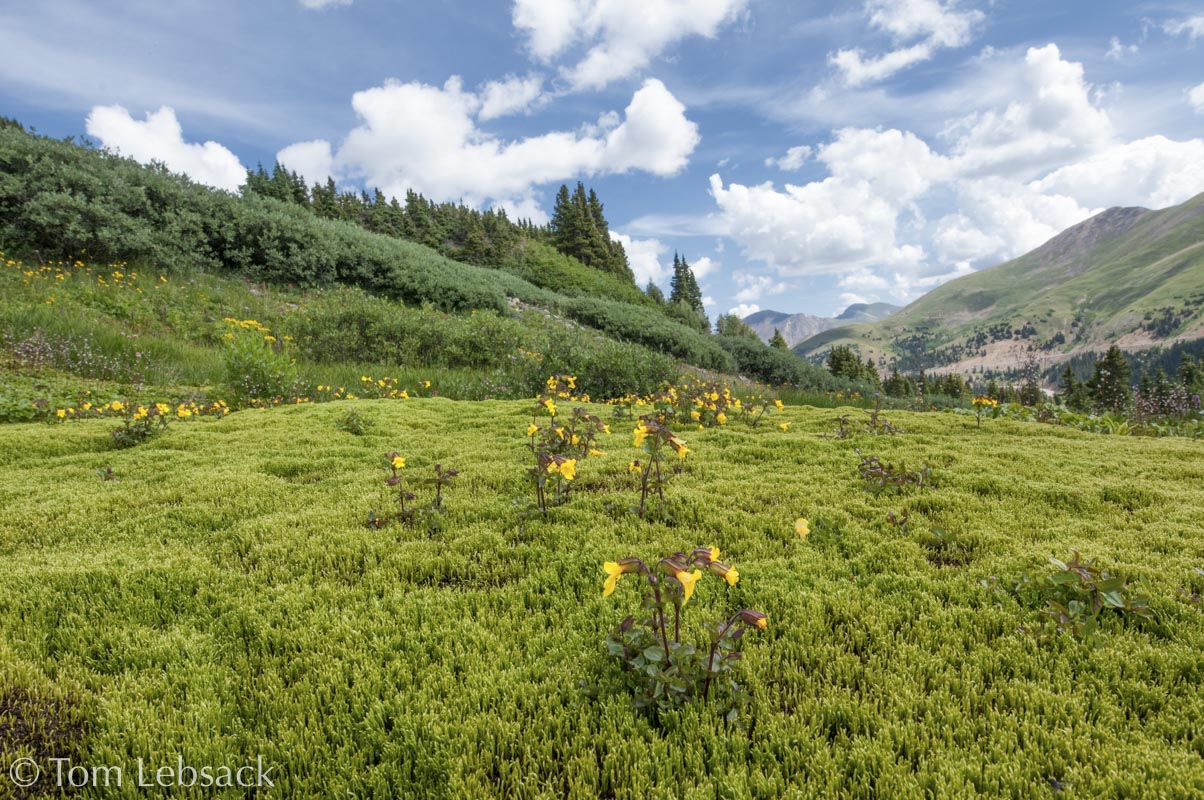Erythranthe tilingii
(Subalpine Monkeyflower)
| Scientific Name | Erythranthe tilingii (Mimulus tilingii) | USDA PLANTS Symbol | MITI |
| Common Name | Subalpine Monkeyflower | ITIS Taxonomic Serial No. | 503850 |
| Family | Phrymaceae (Lopseed), formerly Scrophulariaceae | SEINet Reference |
Click Here |
| Description |
Life zones and habitat: Montane to alpine (9500 to 13000 ft.); wet areas in meadows, along streams and seeps, mossy areas.
Plant: Erect annual or perennial 1 to 14 inches tall; weak, hollow stems. Leaves: Deep green, opposite, elliptic or ovate to round with dentate to entire margins; lower leaves short-petiolate, upper may be sessile. Inflorescence: Clusters of 1 to less than 5 flowers each rising on pedicels from a pair of opposite bracts, appearing like leaf axils; flowers two-lipped yellow, tubular, 2/3 to 1-1/4 inches long; upper lip two-lobed, larger lower lip is 3-lobed with a few to several pale reddish-brown spots, and bearded throat. Bloom Period: June to August. References: "Flora of Colorado" by Jennifer Ackerfield, Jepson eFlora and American Southwest Notes: Some authorities do not consider E. tilingii a separate species, rather an alpine form of E. guttata. |
BONAP Distribution Map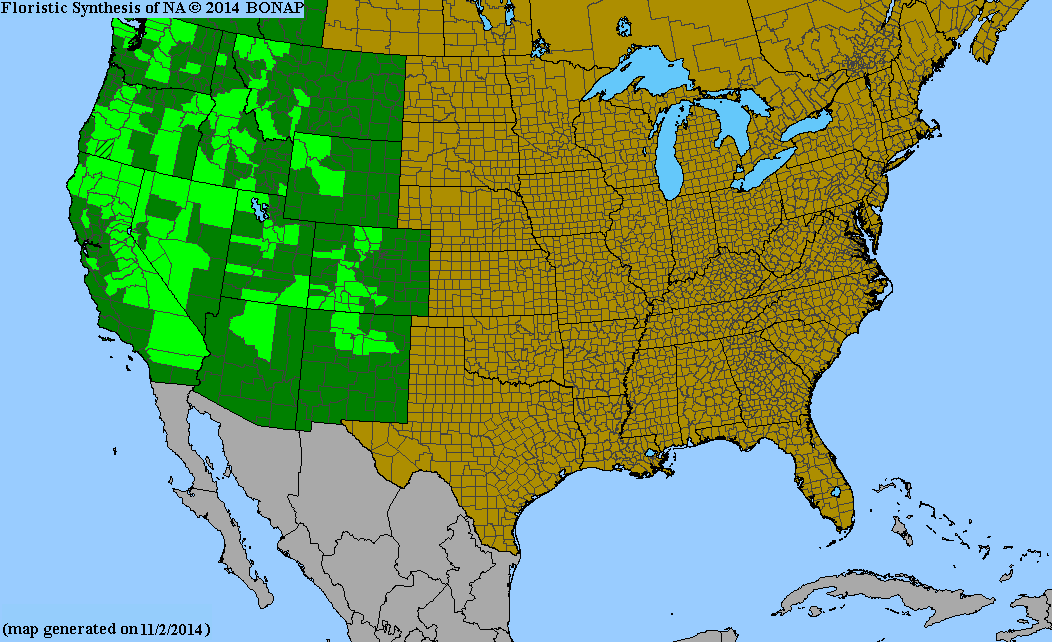 Map Color Key |
Colorado Status: Native |
© Tom Lebsack 2025
Banner photo: Castilleja rhexifolia and a brewing storm over the San Juan Mountains
I try to provide accurate, up-to-date, and relevant information, but cannot guarantee the completeness or accuracy of any information presented on this website. I use authoritative references to insure high standards of accuracy and review and update the information frequently.
